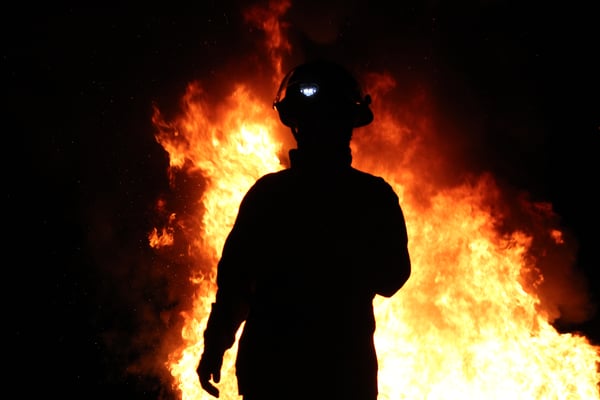It can be quite a daunting prospect, but assessing your property’s fire risk can be incredibly beneficial. With an El Nino event declared in Queensland and summer on the way, now is the perfect time to make your property as safe as possible for fire season. Read on for helpful tips and advice…
General must-check spots
There are a number of items in the home that can be usual suspects when it comes to starting fires or increasing their intensity. Common electrical hazards such as overloaded power points and frayed electrical cords should never be overlooked. Every time you do a big clean, inspect your appliances’ cords and power sockets to avoid potential disasters. It can also be a smart idea to use safety plugs in any unused power points, as well as to turn off any appliances that aren’t frequently used at the wall. Lastly, consider investing in surge protection power boards that protect your items from electrical surge.
If there are any gas appliances in your property, it’s crucial that you have them serviced regularly and that you know where the isolation valves are located. Undetected leaking gas can become explosive when combined with air, so set yourself a reminder and include these appliances in your must-inspect checklist.
With solar panels becoming all the more popular, there is a definite fire risk to be kept in mind. Even when disconnected from the mains power or the panels have been turned off at the switchboard, they can continue to generate power from the sun. Ensure your property’s safety by checking the panels’ connections and look out for any corrosion from the elements. In the event of a fire, inform any emergency services personnel that solar panels are installed and they will follow procedure to prevent damage.
Be vigilant with smoke alarms
Wonderfully clever devices, smoke alarms detect smoke and sound off an alarm that alerts you to a fire and creates an opportunity to escape. According to Queensland law, all properties must be fitted with smoke alarms. Additionally, all landlords must have interconnected photoelectric smoke alarms in their investment properties currently, while owner-occupiers in existing dwellings have until 2027 to confirm installation. These devices mean that when one alarm goes off, all the alarms in the home are also alerted and residents have better chance to exit.
Installing smoke alarms in your home isn’t a matter of ‘set and forget’. Ideally once a month, test the devices by checking that the light on the cover regularly flashes. Next, press and hold the ‘test’ button located on the device’s face until the alarm sounds and then release it. If there is no sound, call the relevant maintenance number. Alternatively, if you hear a chirping sound, this means that the alarm is recharging.
Prep your outdoors
Here’s your cue to move your attention to your property’s exterior and think about what might be a potential fire hazard. Is there any overhanging vegetation on power lines or structures? Are your gutters cluttered with leaves, twigs and bark that could act as kindling for a fire? Is your lawn a little too overgrown? A bit of TLC now can save your home in the long term, plus it will keep things looking beautiful and tidy – two birds, one stone!
While assessing your outdoors, take a look at your street number and see if it’s perfectly visible. Whether it’s on your letterbox or a sign, these markers help emergency services identify which property to attend in the unfortunate event of a fire. Clear away any vegetation that might have grown and clear a visual path to save precious moments in a potential crisis.
Have a fire plan and seek expert advice
It doesn’t require maintenance per se, but discussing and locking in a fire plan with your household can have incredible impact. Walk around your property and consider the entryways of each room, as well as if any windows can be opened and if security grills can be unlocked. Additionally, confirm with your household how you would escape a fire from the property’s different levels, especially if you have a dual- or tri-level home. Lastly, agree on a meeting place once everyone is out – this could be at a neighbour’s home across the road, a nearby park or at the end of the street. For more advice, visit the Queensland Fire and Emergency Service’s Fire Escape Plan site here.
Seeking extra peace of mind? Queensland Fire and Emergency Service offers a free Safehome service that allows firefighters to come into your property and identify potential hazards. Bookings can be made here or by calling 13QGOV (13 74 68).
For more ideas and to keep up-to-date with all things Brisbane real estate, subscribe to the newsletter below.
